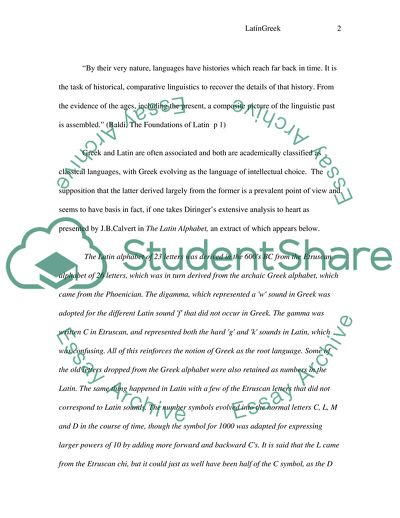Cite this document
(Latin and Greek Classical Languages Term Paper Example | Topics and Well Written Essays - 2000 words, n.d.)
Latin and Greek Classical Languages Term Paper Example | Topics and Well Written Essays - 2000 words. https://studentshare.org/humanitarian/1721977-essay-title-2-latin-and-greek-are-often-associated-both-being-known-as-classical-languages-at-the-same-time-we-know-that-both-languages-are-indo-european
Latin and Greek Classical Languages Term Paper Example | Topics and Well Written Essays - 2000 words. https://studentshare.org/humanitarian/1721977-essay-title-2-latin-and-greek-are-often-associated-both-being-known-as-classical-languages-at-the-same-time-we-know-that-both-languages-are-indo-european
(Latin and Greek Classical Languages Term Paper Example | Topics and Well Written Essays - 2000 Words)
Latin and Greek Classical Languages Term Paper Example | Topics and Well Written Essays - 2000 Words. https://studentshare.org/humanitarian/1721977-essay-title-2-latin-and-greek-are-often-associated-both-being-known-as-classical-languages-at-the-same-time-we-know-that-both-languages-are-indo-european.
Latin and Greek Classical Languages Term Paper Example | Topics and Well Written Essays - 2000 Words. https://studentshare.org/humanitarian/1721977-essay-title-2-latin-and-greek-are-often-associated-both-being-known-as-classical-languages-at-the-same-time-we-know-that-both-languages-are-indo-european.
“Latin and Greek Classical Languages Term Paper Example | Topics and Well Written Essays - 2000 Words”. https://studentshare.org/humanitarian/1721977-essay-title-2-latin-and-greek-are-often-associated-both-being-known-as-classical-languages-at-the-same-time-we-know-that-both-languages-are-indo-european.


